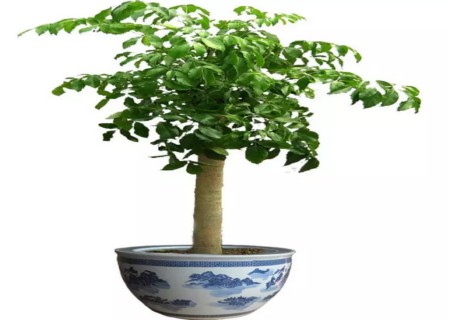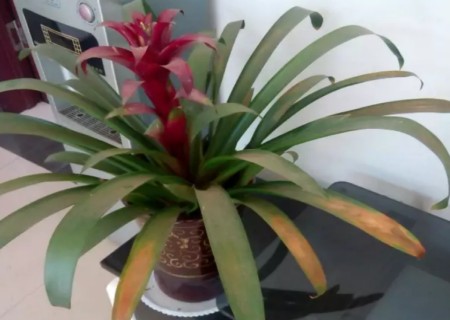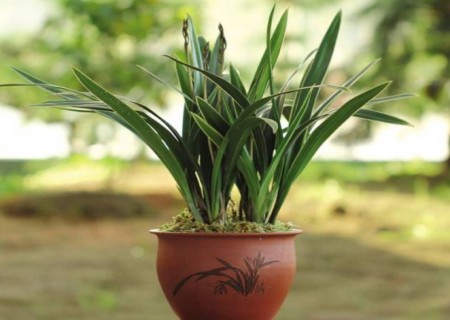What about the old leaves of the potted happiness tree?
The happiness tree is beautiful in shape, elegant in posture and green in leaves. It is a common indoor potted plant, which can be made into small and medium-sized potted plants and placed indoors and balconies. It is a good furniture embellishment and green plant. Its exuberant vitality always brings auspicious and happy implications for people. But recently, many friends have reacted that their own happiness trees are always losing their leaves. What is the reason for this?
Happiness tree is what we usually call bean tree, also known as bean tree. Because it can purify harmful and poisonous gases in the air, it is called "health tree" by relevant authoritative experts. The happiness tree is afraid of the cold and needs to survive in places where it is hot, humid and sunny. The soil should be loose, fertile and well drained. The best loam is the loam rich in organic matter or sand. The following are the reasons for the loss of leaves of the family potted happiness tree and the countermeasures:

1. It is caused by the high temperature in summer. The suitable temperature for the growth of the happiness tree is 20-30 degrees, and the summer temperature often exceeds this temperature. When the temperature is too high, the happiness tree will lose its leaves.
Countermeasures: the happiness tree placed on the balcony should be properly sheltered or moved to a cool and ventilated place. In addition, it can often spray water to or around the leaves to increase humidity and reduce the temperature.
2. The light is too weak. The happiness tree is a light-loving plant, which can grow normally under all-day sunshine or semi-shade conditions. Potted plants placed indoors will cause fallen leaves if they do not get light for a long time.
Countermeasures: in order to avoid the fallen leaves caused by the hidden environment, move the happiness tree to a place with plenty of light every once in a while, so that it can increase the light.
3. Caused by too much moisture. Happy trees like a humid environment, but if too much watering, it is easy to cause leaves to fall off. Sometimes we find that the good green leaves of the happiness tree have fallen, and it is very likely that you have watered too much.
Countermeasures: don't water too frequently and water once every 4-5 days in summer. Before each watering, try the soil with your fingers. If it is wet, you do not need to water it.
4. Caused by poor ventilation. The summer temperature is high and the air is stuffy. If it is not ventilated in time, it will also cause the happiness tree to lose its leaves.
Countermeasures: open windows frequently to enhance air flow
5. the wrong soil or the soil itself is not fertile enough.
Countermeasures: potted happiness trees should be cultivated with loose and fertile soil, good drainage and ventilation, and rich in organic matter. It is usually mixed with garden soil: rotten leaf soil: mature organic fertilizer: River sand = 5: 3: 1: 1. Loosen the soil once a month during the growing season to ensure that the roots are always in a good state of penetration. In general, small and medium-sized plants, as family potted plants, can turn the pot once a year when they leave the house at the beginning of April to meet the requirements of soil fertility for their annual growth.
6. It is caused by insufficient fertilizer or too many fertilizers.
Countermeasures: see if there is too much fertilizer, whether the organic fertilizer is rotten, and so on. At this time, you can dilute the fertility by flushing water to the basin soil, but be careful not to cause stagnant water. When the fertility is insufficient, in addition to adding an appropriate amount of rotten cake fertilizer and 3% multi-component compound fertilizer to the cultivated soil, topdressing should also be given uninterrupted. Quick-acting liquid fertilizer can be applied once a month during the growing season, and rotten cake fertilizer and water can usually be used. A small number of potted plants in the family, or large potted plants displayed in public places for a long time, can be buried regularly with a small amount of multi-component slow-release compound fertilizer particles, or 0.2% urea and 0.1% potassium dihydrogen phosphate mixed solution.
7. it is caused by environmental mutation or metabolism.
Countermeasures: because of the sudden change of the environment, there is no need to worry about this kind of situation, we can take measures to reduce the degree of change of the environment, and wait for the happiness tree to adapt. The growth of the happiness tree is metabolized all the time, and there will be withered and yellow leaves that die of old age. If the growth is normal, there is no problem. You can cut the yellow leaves directly without special maintenance.
8. The happiness tree has no roots.
Countermeasures: if you just bought it, you can return it or rest the happiness tree until it sprouts new roots.
Tips:
1, the principle of watering: watering thoroughly, the frequency should not be fixed for a long time.
2. Turn the basin from time to time to illuminate the sun in all directions to keep the humidity of the air moist, which can promote coordinated and good growth.
3. Clear water can be sprayed on its leaves 2 or 3 times a day, which can effectively prevent the leaf tips of newly drawn leaves from withering and yellowing.
Experience of farming:
Please do not put the bonsai in the air outlet of the air conditioner or too close to the heating.
2. You can move the bonsai outdoors or balcony for two days every half month (it is best to choose cloudy or rainy days), which is more conducive to its natural growth.
3. Never pour tea or litter into the basin.
4. The ground is warm in winter in the north, so bonsai should be put on a suitable pot rack.
5. When new buds are sprouted in spring, there will be some metabolic phenomena (changing leaves, falling leaves).
6. Applying 0.2 jin of organic fertilizer and 0.02 jin of compound fertilizer per plant can also increase the application of farm manure and cake fertilizer (such as cottonseed cake, peanut cake and hemp cake). Fertilizer should be applied along the basin wall as far as possible, not close to the root of Taxus mairei. Generally speaking, the newly bought happiness tree bonsai has nutritious soil, which does not need to be fertilized within 3 months, and then applied once every 2 to 3 months.
Time: 2019-05-31 Click:
- Prev

What if the leaves turn yellow and curl when the potted plants are lucky?
At the head of good luck, that is, what we often call pineapple, its flowers bloom at the top or middle of the plant, the flowers and leaves are luxuriant, the flowers are red, and there is a festive atmosphere. It is precisely because the top of this pineapple plant is covered with red flowers, so it is named by the idiom "Hongyudang" to express good luck.
- Next

What if the leaves of potted magnolia turn yellow?
Mo Lan, also known as Orchid, originated in China, Vietnam and Myanmar. Spring Festival, when the Chinese orchid, Qingyan with Jiao, fragrance overflowing, full of spring. There is a long history of cultivation in China, and in recent years, new varieties of Cymbidium have been in the market. Cymbidium is rich in aroma, changeable in color, beautiful in color and unique in leaf shape.
Related
- Fuxing push coffee new agricultural production and marketing class: lack of small-scale processing plants
- Jujube rice field leisure farm deep ploughing Yilan for five years to create a space for organic food and play
- Nongyu Farm-A trial of organic papaya for brave women with advanced technology
- Four points for attention in the prevention and control of diseases and insect pests of edible fungi
- How to add nutrient solution to Edible Fungi
- Is there any good way to control edible fungus mites?
- Open Inoculation Technology of Edible Fungi
- Is there any clever way to use fertilizer for edible fungus in winter?
- What agents are used to kill the pathogens of edible fungi in the mushroom shed?
- Rapid drying of Edible Fungi

